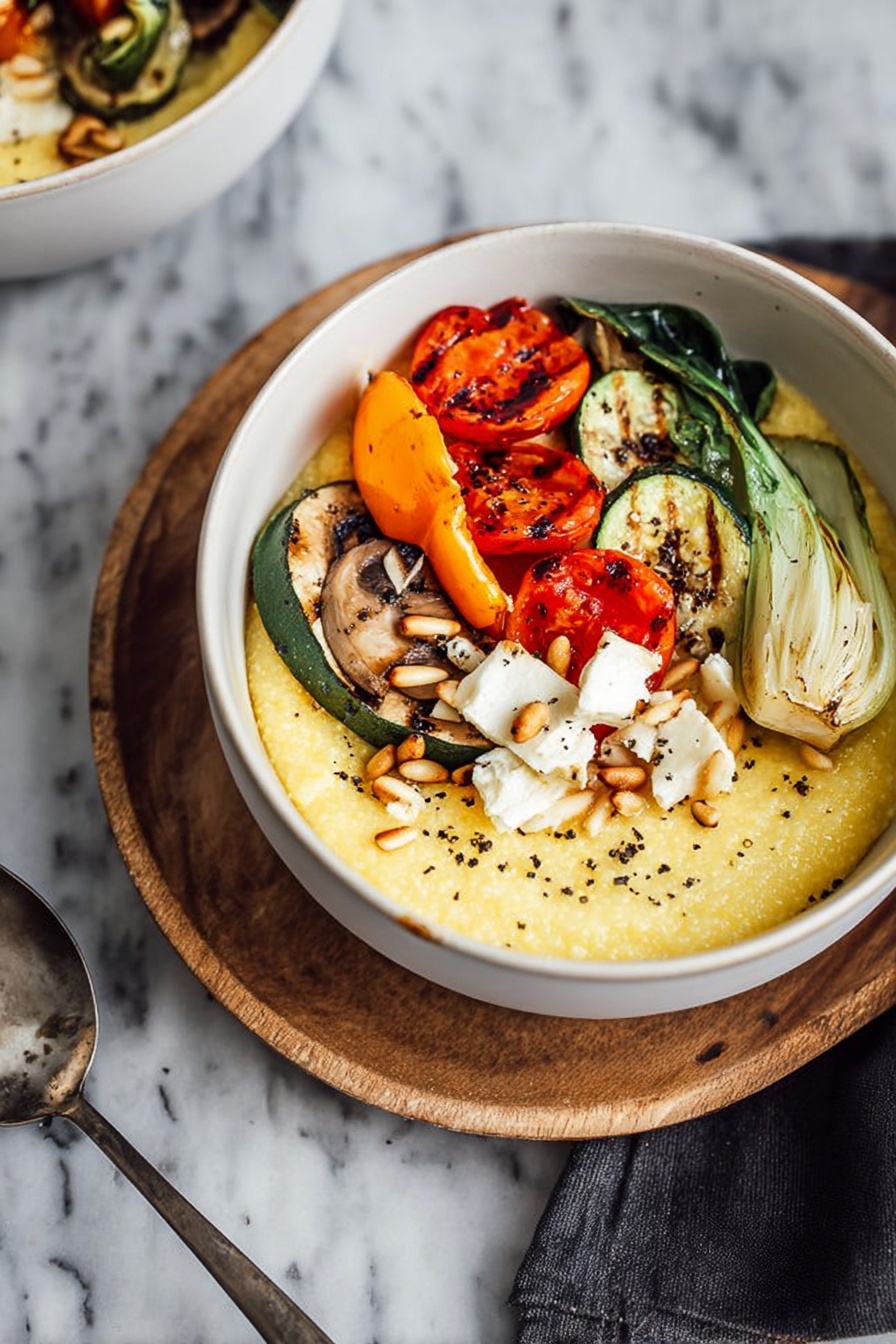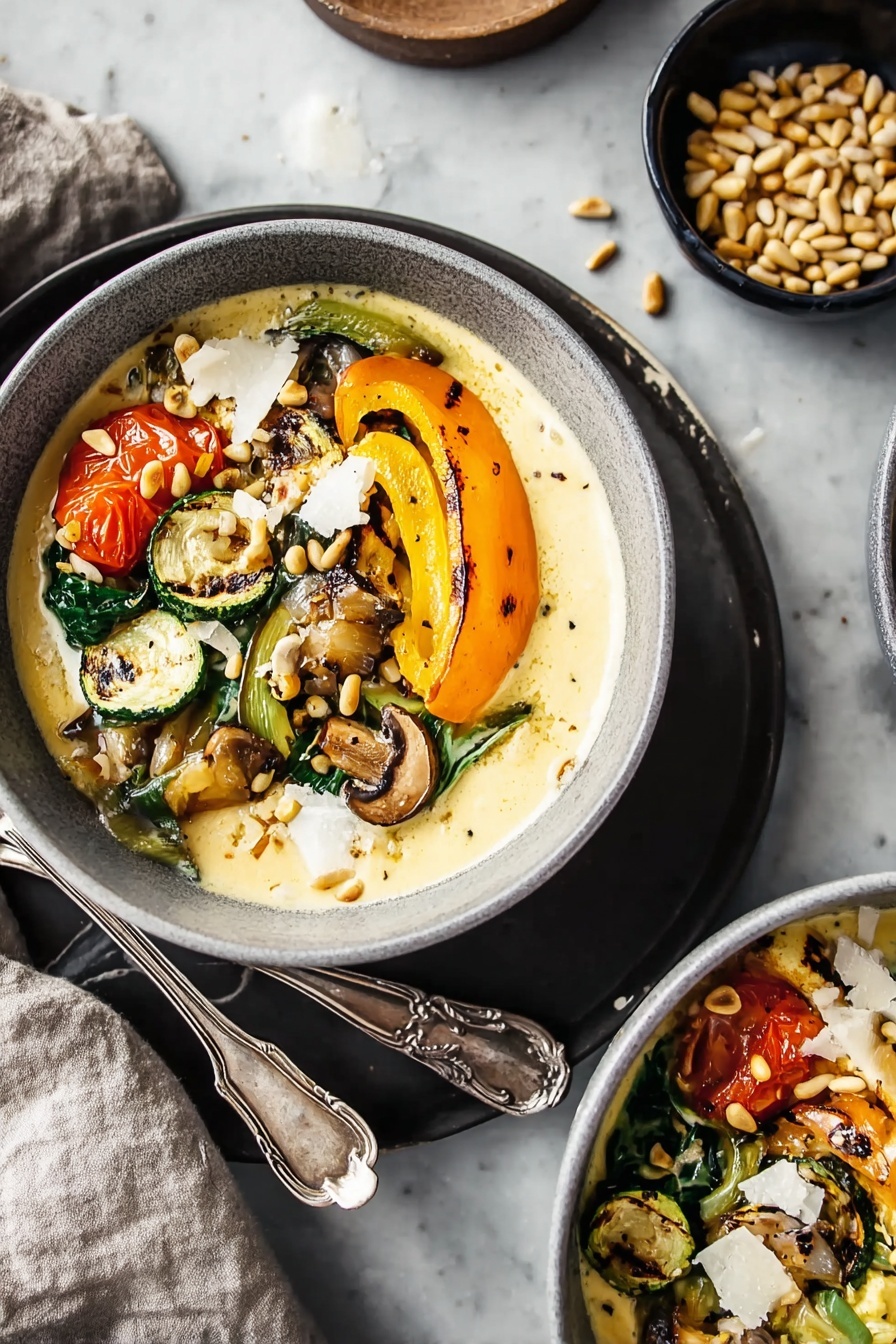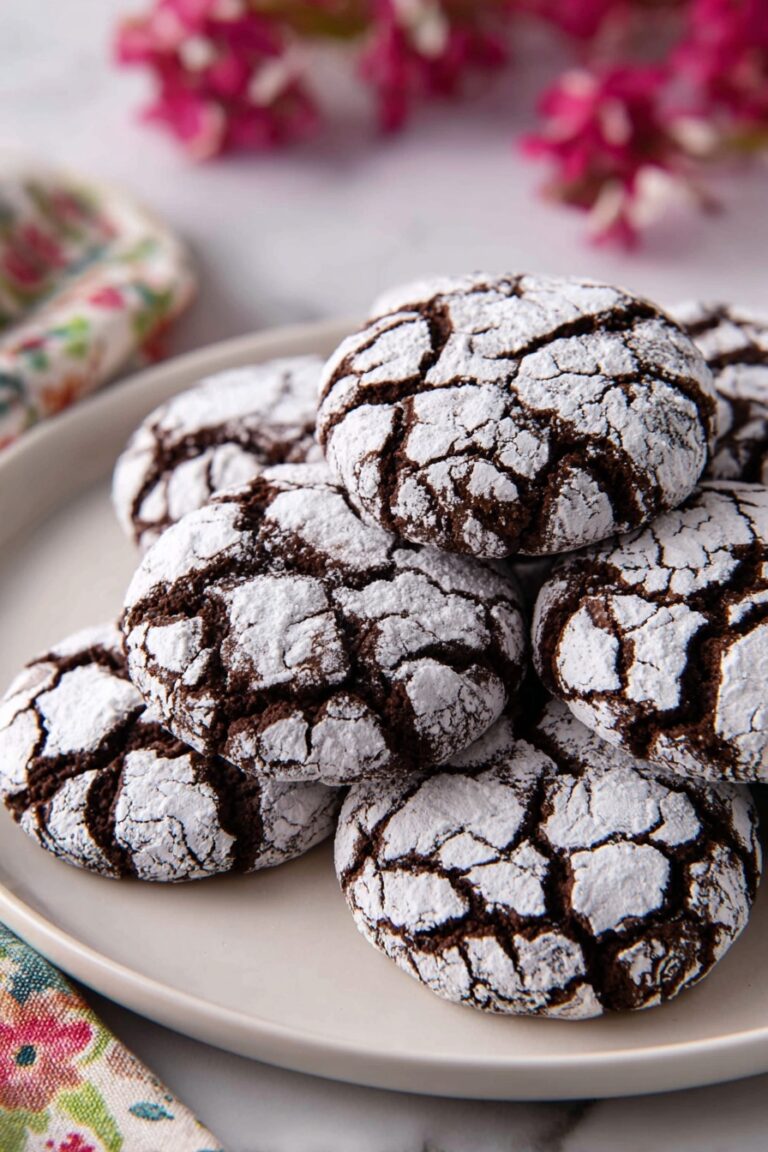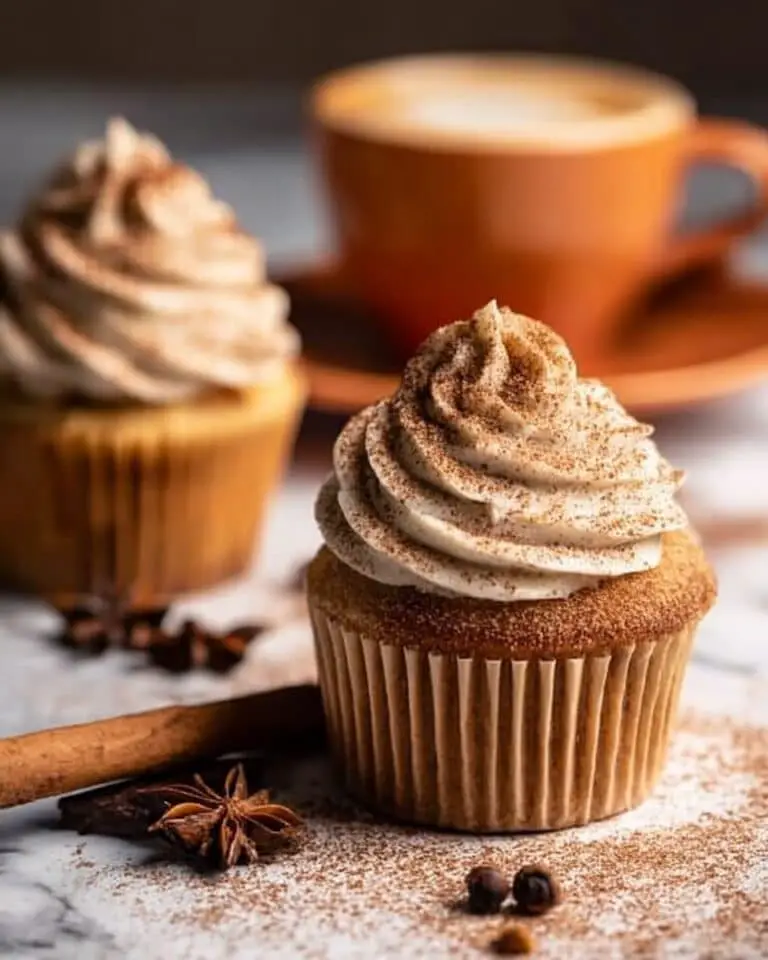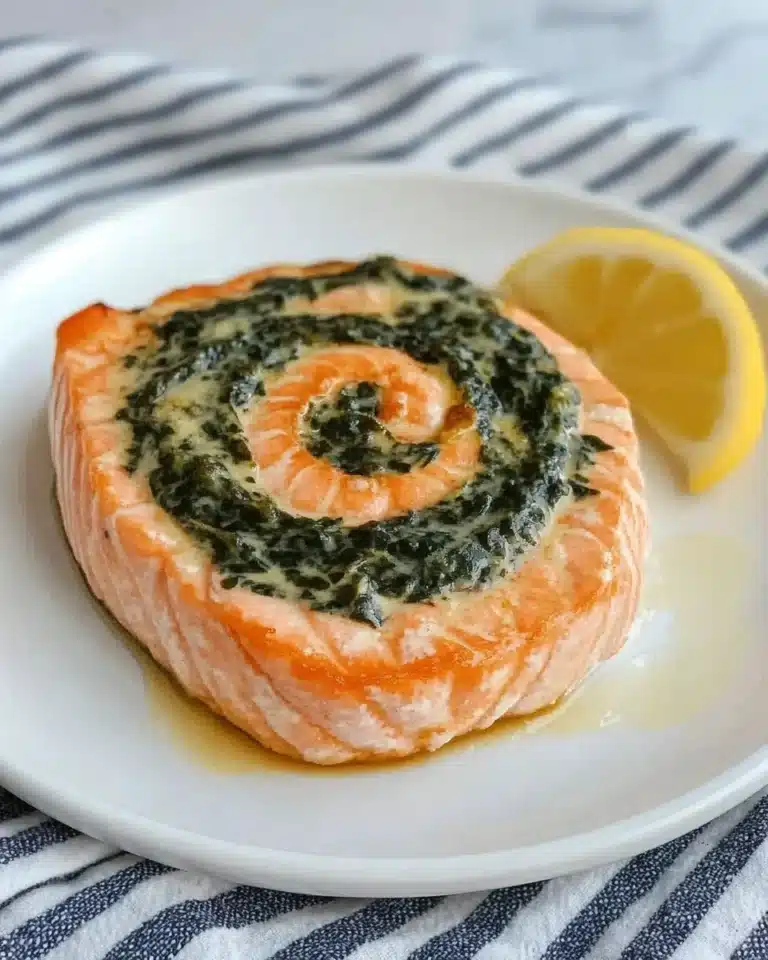If you’re looking for a cozy, comforting dish that feels fancy without the fuss, you’re going to adore this Creamy Goat Cheese Polenta with Ratatouille Recipe. I absolutely love how the tangy goat cheese melts into the smooth polenta, creating this irresistible creaminess, while the ratatouille brings a fresh, vibrant layer of tender roasted veggies that just sing together. When I first tried this combo, it became an instant family favorite—simple enough for a weeknight but elegant enough to serve guests. Stick with me, and I’ll walk you through everything you need to make this delightful meal shine in your kitchen.
Why You’ll Love This Recipe
- Rich Creaminess Meets Bright Veggies: The goat cheese-infused polenta pairs beautifully with the roasted, herby ratatouille for a satisfying balance of flavors.
- Comfort Food with Gourmet Flair: It’s easy enough for a weeknight but looks and tastes like something special.
- Versatile and Seasonal: The ratatouille is a great way to celebrate fresh summer vegetables—plus, you can swap in whatever’s handy.
- Great for Entertaining or Meal Prep: This dish holds well and reheats beautifully, making leftovers just as good the next day.
Ingredients You’ll Need
These ingredients come together like a dream—fresh veggies, creamy goat cheese, and hearty polenta make a perfect trio. When shopping, aim for ripe, firm vegetables for the ratatouille and a good-quality goat cheese for the best melt and flavor.
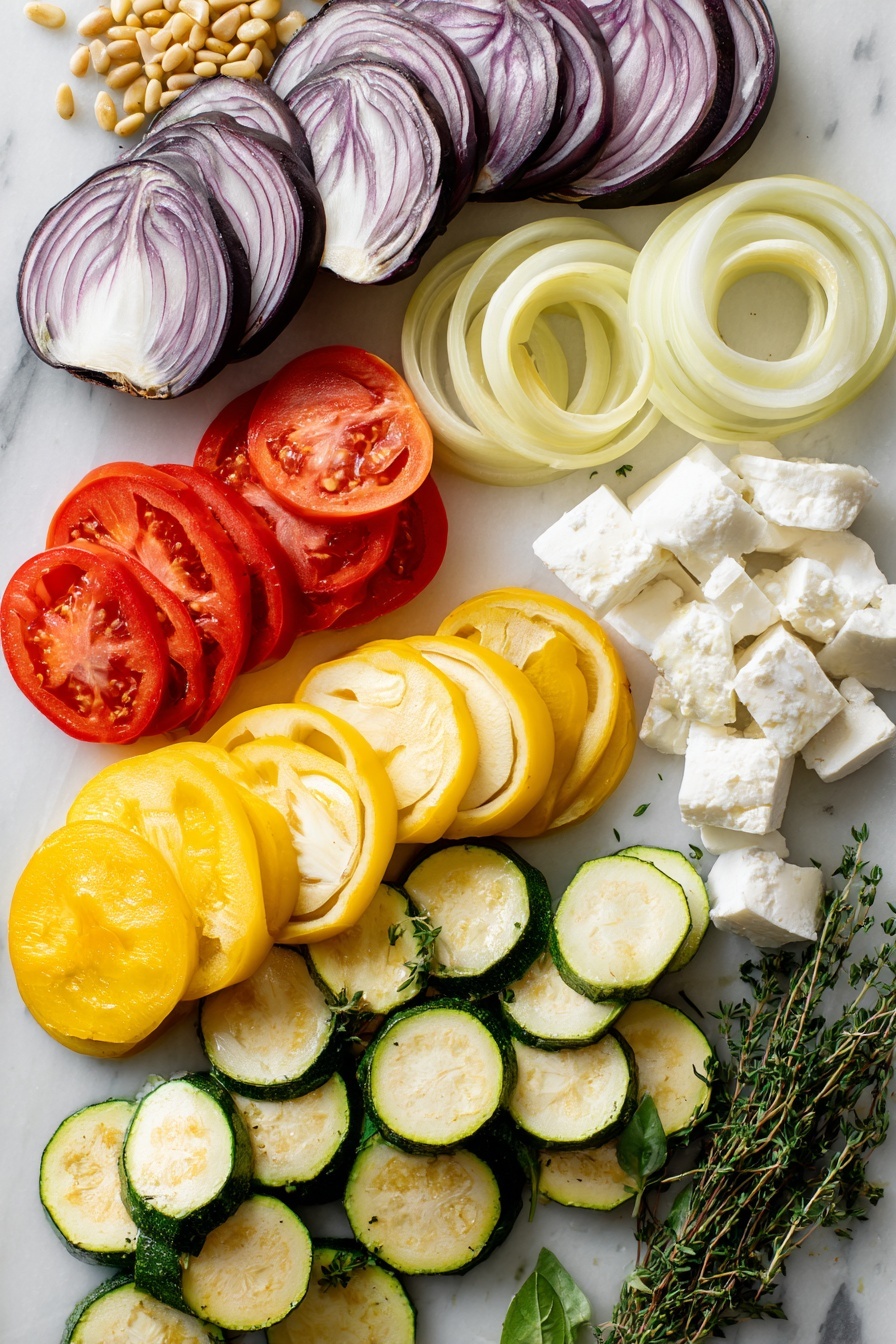
- Extra-virgin olive oil: Helps roast the veggies perfectly and adds a lovely fruity richness.
- Garlic clove: Infuses a subtle aroma without overpowering the ratatouille.
- Eggplant: Choose a small globe eggplant, firm and glossy, to avoid bitterness.
- Zucchini: Adds freshness and texture; medium size is ideal.
- Yellow squash: Brings a touch of sweetness to balance the savory flavors.
- Bell pepper: Pick any color you like, but yellow, red, or orange work best for vibrant presentation.
- Roma tomatoes: Their meaty flesh holds up well when baked.
- Yellow onion: Adds mild sweetness and depth when thinly sliced.
- Garlic powder: Enhances the garlic flavor throughout the dish.
- Kosher sea salt: Essential for seasoning both the ratatouille and polenta.
- Freshly cracked black pepper: To taste, for a bright, peppery kick.
- Fresh thyme sprigs: Remove leaves—fresh thyme makes a world of difference in aroma and taste.
- Chicken or vegetable stock: The cooking liquid for the polenta; stock adds richness.
- Whole milk: Keeps the polenta creamy without thinning it out too much.
- Stone-ground polenta or yellow cornmeal: Stone-ground polenta has a wonderful texture and flavor.
- Goat cheese: Use a fresh, tangy variety that melts smoothly into the polenta.
- Toasted pine nuts: Adds crunch and a nutty accent to the finished dish.
- Fresh basil leaves: Minced for a bright herbal finish on top.
Variations
I love making this Creamy Goat Cheese Polenta with Ratatouille Recipe my own by switching up the veggies depending on the season or even going vegetarian or vegan when friends come over. It’s a versatile dish that invites you to play!
- Vegetarian Variation: Simply use vegetable stock instead of chicken stock to keep it fully vegetarian without losing flavor—I’ve done this more times than I can count, and it’s just as satisfying.
- Vegan Version: Swap out goat cheese for a creamy cashew cheese and use plant-based milk. It’s a fun twist that still delivers creaminess.
- Seasonal Veggies: If you don’t have yellow squash or eggplant, try adding mushrooms, asparagus, or even roasted sweet potatoes for something a little different.
- Spice It Up: Add a pinch of red pepper flakes to the ratatouille for a gentle kick—my family actually loves this slight heat.
How to Make Creamy Goat Cheese Polenta with Ratatouille Recipe
Step 1: Prepare and Roast the Ratatouille Vegetables
First things first—preheat your oven to 375°F and grease an 8 x 8-inch baking dish with a couple tablespoons of olive oil. Rub the cut sides of a garlic clove all over the pan to lightly infuse that subtle garlicky aroma, then toss it out. Next, lay out your sliced eggplant, zucchini, yellow squash, bell pepper, tomatoes, and onion on your work surface, drizzle with the remaining olive oil, and season with garlic powder, salt, and freshly cracked pepper. This step ensures every bite is seasoned just right. Arrange the slices in a beautiful circular pattern in the dish, alternating veggies for color and texture. Then scatter some fresh thyme leaves on top. Cover with foil and bake for 20 minutes, remove the foil, and bake for another 25 minutes until the veggies are tender and slightly caramelized at the edges—this roasting brings out the natural sweetness that I find so irresistible.
Step 2: Cook the Polenta Until Heavenly Creaminess
While your ratatouille is roasting, bring 6 cups of chicken or vegetable stock and 2 cups of whole milk to a boil in a medium-sized pan. Add kosher salt and pepper to taste. Once boiling, reduce to medium heat and slowly whisk in 1½ cups of stone-ground polenta. This part takes a bit of patience—you want to stir often (every couple of minutes) to prevent lumps and make sure the polenta doesn’t stick or burn on the bottom. It usually takes about 30 minutes for the polenta to become thick and start pulling away from the sides of the pan. This is when you know it’s got that perfect creamy texture I love. Then stir in 6 ounces of soft goat cheese until it melts into the mixture. If you prefer looser polenta, add a splash more milk, but keep in mind it thickens as it cools too.
Step 3: Assemble and Serve with Love
Spoon the creamy goat cheese polenta into bowls or plates, then pile on a generous helping of your beautifully roasted ratatouille. Finish with a sprinkle of crumbled goat cheese, toasted pine nuts for crunch, and a scattering of minced fresh basil leaves. The combination of the creamy base, the tender vegetables, and the fresh herbaceous finish is something my family goes crazy for every time.
Pro Tips for Making Creamy Goat Cheese Polenta with Ratatouille Recipe
- Consistent Stirring is Key: I learned the hard way that neglecting to stir polenta frequently causes lumps and burning—keep your whisk busy for silky smooth results.
- Use Fresh Thyme Leaves Only: Stripping thyme off the stems makes a huge difference; woody bits can be distracting in every bite.
- Choose Stone-Ground Polenta: It adds superior texture and flavor compared to instant versions I’ve tried.
- Don’t Skip Toasting Pine Nuts: Toasting them enhances their flavor and adds a wonderful crunch that contrasts with the creamy polenta.
How to Serve Creamy Goat Cheese Polenta with Ratatouille Recipe
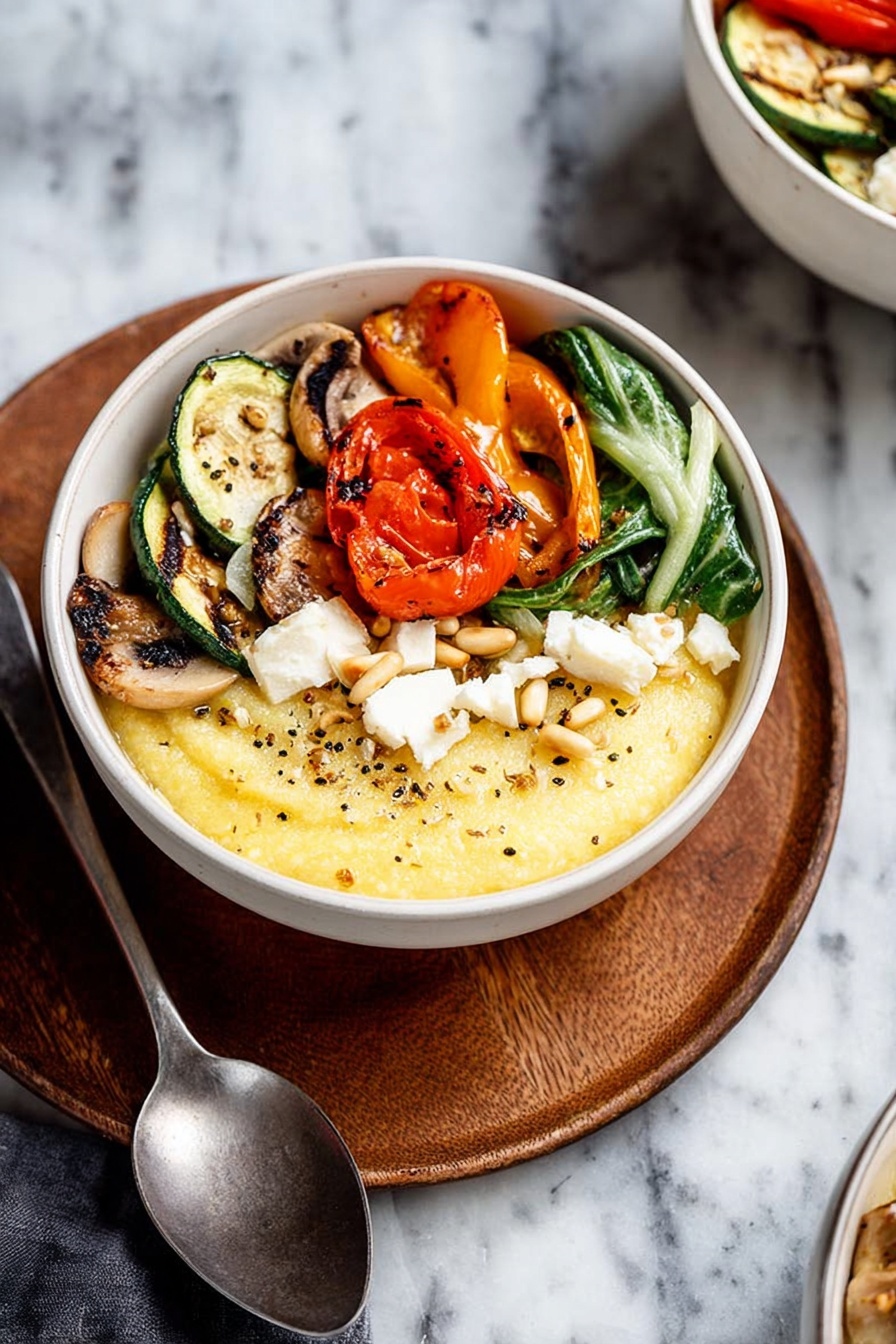
Garnishes
I like to finish my bowls with a good crumble of extra goat cheese because that creamy tang is just addictive. Toasted pine nuts take the texture to a whole new level, and fresh basil adds that fragrant, herbal pop that brightens up the whole dish—trust me, don’t skip the basil!
Side Dishes
This dish is hearty on its own, but if you want to round out your meal, a crisp green salad with a lemony vinaigrette pairs beautifully, or some crusty artisan bread to soak up every last bit of polenta and ratatouille juice. For a fuller dinner, roasted chicken or grilled sausages make great companions.
Creative Ways to Present
For dinner parties, I like to serve this in shallow soup bowls, garnished with edible flowers or microgreens on top—that always impresses guests! You can also layer the ratatouille over a polenta cake, set in a ring mold for a photogenic presentation. On lazy weekends, just a rustic scoop from the pot, and you’re all set.
Make Ahead and Storage
Storing Leftovers
Leftover polenta and ratatouille store really well in the fridge. I keep them in separate airtight containers because that way I can reheat just what I want and prevent the polenta from soaking up too much moisture from the veggies. They’ll stay good for up to 3 days, perfect for quick lunches or easy dinners.
Freezing
I’ve frozen both polenta and ratatouille separately with good results. Freeze in freezer-safe containers or bags for up to 2 months. When thawing, it’s best to do so overnight in the fridge to preserve texture and flavor.
Reheating
To reheat the polenta, add a splash of milk or water and warm it gently on the stove while stirring until creamy again. The ratatouille can be reheated in a skillet over medium heat until warmed through. This method keeps the veggie texture intact—microwaving often makes them too mushy, so take the extra minute to reheat on the stovetop.
FAQs
-
Can I make the ratatouille ahead of time?
Absolutely! Ratatouille actually tastes better after sitting for a few hours or overnight, as the flavors meld beautifully. Just store it airtight in the fridge and gently rewarm before serving with your creamy polenta.
-
What type of goat cheese works best?
I recommend a fresh, soft goat cheese that melts easily—something tangy but creamy. Avoid aged or crumbly varieties as they won’t blend as smoothly into the polenta.
-
Can I use instant polenta instead of stone-ground?
You can, but the texture will be quite different. Stone-ground polenta has a more complex flavor and slightly coarse texture, which I prefer. Instant polenta cooks faster but can be mushier.
-
Is this recipe gluten-free?
Yes, both polenta and ratatouille ingredients are naturally gluten-free. Just make sure your vegetable stock and any other packaged items don’t contain hidden gluten.
Final Thoughts
This Creamy Goat Cheese Polenta with Ratatouille Recipe has become one of those heartwarming dishes I always come back to. It’s simple but layered with flavors and textures that delight every bite. I love sharing this with friends and family because it feels like a hug on a plate—comforting, nourishing, and just a little bit special. So, grab your polenta and those fresh veggies, and let this creamy, tangy, veggie-packed dish become a new favorite in your home, too.
Print
Creamy Goat Cheese Polenta with Ratatouille Recipe
- Prep Time: 20 minutes
- Cook Time: 45 minutes
- Total Time: 1 hour 5 minutes
- Yield: 6 servings
- Category: Main Course
- Method: Baking
- Cuisine: French
- Diet: Vegetarian
Description
This Creamy Goat Cheese Polenta with Ratatouille is a comforting and flavorful dish featuring tender roasted vegetables layered in a circular pattern, complemented by rich, creamy polenta infused with tangy goat cheese. Toasted pine nuts and fresh basil add a delightful crunch and aromatic finish, making it a perfect vegetarian meal that’s both satisfying and elegant.
Ingredients
Ratatouille
- 4 tablespoons extra-virgin olive oil
- 1 garlic clove, halved
- 1 small globe eggplant, cut into ¼-inch-thick slices
- 1 medium zucchini, cut into ¼-inch-thick slices
- 1 medium yellow squash, cut into ¼-inch-thick slices
- 1 yellow, red, or orange bell pepper, cut into ¼-inch-thick slices
- 4 Roma tomatoes, cut into ¼-inch-thick slices
- 1 large yellow onion, thinly sliced
- 1 teaspoon garlic powder
- 1 teaspoon kosher sea salt
- Freshly cracked black pepper, to taste
- 5 sprigs fresh thyme, leaves removed
Polenta
- 6 cups chicken or vegetable stock
- 2 cups whole milk, plus more as needed
- 1½ teaspoons kosher salt
- ½ teaspoon freshly cracked black pepper
- 1½ cups stone-ground polenta or yellow cornmeal
- 8 ounces goat cheese (6 ounces for mixture, 2 ounces for topping)
- ¼ cup toasted pine nuts
- 10 to 12 fresh basil leaves, minced
Instructions
- Prepare the Oven and Baking Dish: Preheat your oven to 375°F and place a rack in the center position. Grease an 8 x 8-inch baking dish with 2 tablespoons of extra-virgin olive oil. Rub the cut sides of the halved garlic clove all over the bottom and sides of the dish to infuse it with flavor, then discard the garlic clove.
- Prepare the Vegetables: On a clean surface, arrange the sliced eggplant, zucchini, yellow squash, bell pepper, tomatoes, and onion. Drizzle the remaining 2 tablespoons of olive oil over them, then sprinkle with garlic powder, kosher salt, and freshly cracked black pepper to taste. Toss gently to coat all the slices evenly.
- Assemble the Ratatouille: Arrange the vegetable slices in the greased baking dish in a circular pattern, alternating the veggies from the outer edge toward the center. Scatter the fresh thyme leaves over the top to add herbaceous notes.
- Bake the Ratatouille: Cover the dish with foil and bake in the preheated oven for 20 minutes. Remove the foil and continue baking for about 25 minutes more, or until the vegetables are tender and cooked through.
- Prepare the Polenta Base: While the ratatouille is baking, combine the chicken or vegetable stock, 2 cups of whole milk, kosher salt, and pepper in a medium saucepan. Bring the mixture to a boil over high heat, then reduce to medium heat.
- Cook the Polenta: Slowly whisk in the stone-ground polenta, stirring frequently to avoid lumps. Continue to cook and stir often until the polenta thickens and starts to pull away from the sides of the pan, about 30 minutes.
- Finish the Polenta: Remove the pan from heat and stir in 6 ounces of goat cheese until melted and well combined. If you desire a thinner consistency, gradually add more milk and stir until you reach the preferred texture.
- Serve: Divide the creamy polenta evenly among six bowls. Spoon a generous helping of the roasted ratatouille on top. Garnish each serving with the remaining crumbled goat cheese, toasted pine nuts, and finely minced fresh basil leaves for added color and flavor.
Notes
- Use stone-ground polenta for the best texture; instant polenta will not yield the same creamy consistency.
- Vegetable stock can be used instead of chicken stock to keep the dish vegetarian.
- For a vegan version, substitute goat cheese with a plant-based cheese alternative and use vegetable stock and non-dairy milk.
- To toast pine nuts, dry roast them in a skillet over medium heat until golden and fragrant, about 2-3 minutes, stirring often to prevent burning.
- The ratatouille can be prepared a day ahead and gently reheated before serving; polenta is best served fresh.
- Adjust seasoning at the end to your taste, especially salt and pepper.
Nutrition
- Serving Size: 1 bowl (approx. 1/6th of recipe)
- Calories: 420
- Sugar: 6g
- Sodium: 600mg
- Fat: 22g
- Saturated Fat: 10g
- Unsaturated Fat: 11g
- Trans Fat: 0g
- Carbohydrates: 38g
- Fiber: 6g
- Protein: 12g
- Cholesterol: 30mg

